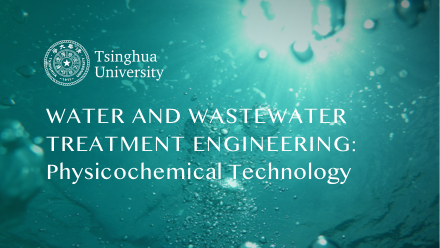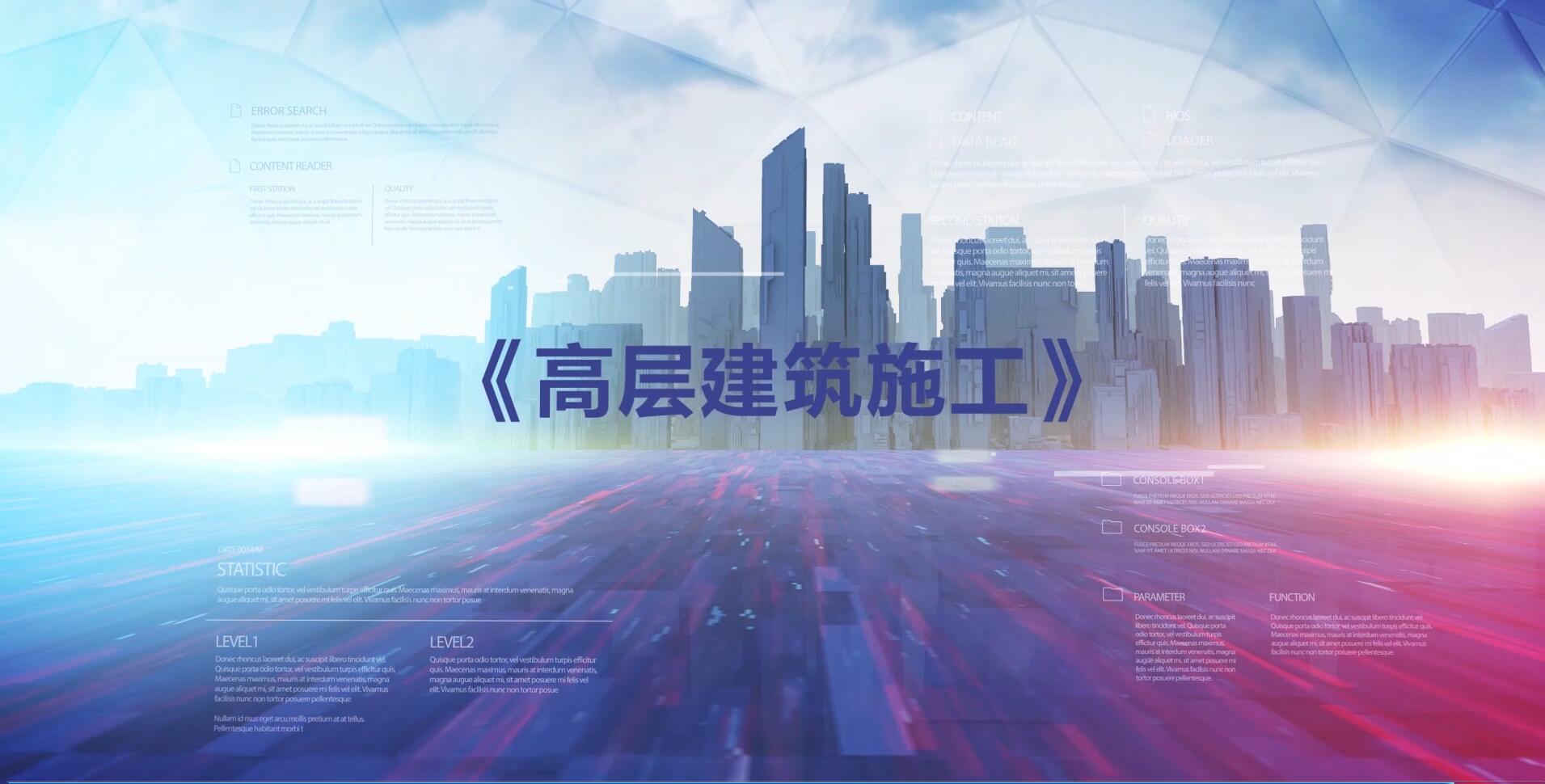
当前课程知识点:Water and Wastewater Treatment Engineering: Physicochemical Technology > Chapter 8 Redox method > 8-5 Electrolysis > 8-5 Electrolysis
返回《Water and Wastewater Treatment Engineering: Physicochemical Technology》慕课在线视频课程列表
返回《Water and Wastewater Treatment Engineering: Physicochemical Technology》慕课在线视频列表
同学们好!在这一节我们介绍电解
首先来看电解反应的基本原理
这是一个电解槽,在槽中插入了阳极和阴极,同时外加一个电源
如果电解槽中放入电解质,电解质溶液就会在电流的作用下发生氧化反应,这个过程称为电解
利用电解反应可以去除水中的有机和无机污染物
电解法的基本原理与过程比较复杂
涉及到电解的氧化还原、电絮凝以及电解气浮等过程
下面,我们来逐一加以介绍。首先是氧化还原反应
在电解槽的阳极,由于与电源正极连接
可以将电子传递给电源,因此阳极可以发生氧化反应
可以直接氧化水中的有机或无机污染物
同时,在阳极,OH-还会被氧化成氧气
Cl-被氧化成氯气,氧气和氯气均具有氧化能力
均能对水中的污染物进行氧化
而在阴极,由于与电源负极连接
可以从电源接受电子,因此,可以起到还原作用
这种还原作用可以直接还原水中的某些污染物
同时,H+在阴极也会还原成氢气,氢气具有很强的还原作用,也可以使水中的某些污染物得到还原
除氧化还原以外,电解还存在着电絮凝的作用
如果电解槽所用的阳极采用铁板或铝板
通电后,由于电化学的腐蚀作用,铁离子或铝离子就会进入水中,进一步水解生成羟基配合物
这种羟基配合物可以起到混凝剂的作用,将废水中的悬浮物和胶体通过混凝加以去除
第三是电解气浮,在电解池阳极产生氧气,阴极产生氢气
这些气体会以微气泡的形式溢出,比表面积很大
因此,在上升过程中可以粘附水中的杂质,产生气浮作用
其次我们来介绍法拉第电解定理
在电解过程中的理论耗电量可以用法拉第电解定律进行计算
伴随着电解过程,在电极上析出或溶解的物质质量与通过的电量成正比
即可以用下面这个式子来进行计算
其中,G为析出或溶解的物质质量;Q为电解槽通过的电量
I为电流强度;t为电解时间;F为法拉第常数
如果我们知道电流强度,通电时间,就可以计算出理论上析出的物质质量
但在实际电解操作中,由于存在某些副反应,实际消耗的电量比理论值要大很多
因此,用于目的物质析出的电量只占全部电量的一部分,该比例称为电流效率
第三介绍电解装置,在电解法中,使用的电解槽的形式有多种,其中翻腾式电解槽应用最为广泛
下面介绍翻腾式电解槽的构成
上图为电解槽剖面图,下图为平面图
在电解槽中设置有几组阴、阳电极,分组悬挂在吊管上,中间用导流板隔开
水流从电解槽的右边进入,从左边流出,水流方向与极板板面平行
水流进入电解槽后在极板间作上下翻腾流动,在这个过程中,产生电解反应
电解法在水处理中有广泛的应用,可以用于处理含铬、含氰等无机废水
也可以用于处理染料、印染等有机废水,还可以用于电解消毒等
下面以含铬废水为例,介绍利用电解法处理含铬废水过程中涉及的反应过程
首先在阳极,如果阳极采用铁电极,在电解过程中铁电极溶解产生亚铁离子
亚铁离子是很强的还原剂,在酸性条件下可以将废水中的6价铬还原成3价铬
反应方程如下面这两个反应方程所示
从上述反应可知,还原1个6价铬离子,需要3个亚铁离子
理论上阳极铁板的消耗量按质量比应是被处理6价铬离子的3.22倍
如忽略电解过程中副反应消耗的电量和阴极的直接还原作用
从理论上可算出,1安培小时的电量可还原0.3235g 铬
在阴极,H+获得电子被还原成氢气
废水中的6价铬直接被还原成3价铬
此外,随着反应的进行,废水中的H+浓度会逐渐降低,导致碱性增加
使3价铬和3价铁以氢氧化物的形式沉淀下来,最后从废水中去除
在上述反应过程中,试验证明,电解时阳极溶解产生的亚铁离子是6价铬还原成3价铬的重要因素
而阴极直接将6价铬还原为3价铬是次要因素
电解法的优点是:效果稳定可靠、操作管理简单、设备占地面积小
但需要消耗电能、钢材等,运行费用较高
-0-2 Water treatment process
-0-3 Wastewater treatment process
--0-3 Wastewater treatment process
-Chap 0 Homeworks
-1-1 Introduction
-1-2 Properties of colloids
-1-3 Mechanisms and process of coagulation and flocculation
--1-3 Mechanisms of coagulation and flocculation
-1-4 Coagulant and coagulant aids
-- 1-4 Coagulant and coagulant aids
-1-5 Kinetics of coagulation and flocculation
--1-5 Kinetics of coagulation and flocculation
-1-6 Factors affecting the coagulation performance
--1-6 Factors affecting the coagulation performance
-1-7 Facilities for coagulation and flocculation
--1-7 Facilities for coagulation and flocculation
-Chapter 1 Homeworks
-2-1 Introduction
-2-2 Discrete particle settling
--2-2 Discrete particle settling
-2-3 Flocculent settling
-2-4 Zone settling
-2-5 Rectangular settling tank
--2-5 Rectangular settling tanks
-2-6 Process calculation of rectangular settling tanks
--2-6 Process calculation of rectangular settling tanks
-2-7 Vertical Flow (up-flow ) and radial flow settling tank
--2-7 Vertical Flow (up-flow ) and radial flow settling tank
-2-8 Plated sedimentation tank
--2-8 Plated sedimentation tank
-2-9 Clarification pool
-3D interactive demonstration for settling tanks
-Chapter 2 Homework (part 1)
-Chapter 2 Homework (part 2)
-3-1 Introduction
-3-2 Theoretical foundation of air floatation
--3-2 Theoretical foundation of air floatation
-3-3 Pressurized dissolved air flotation
--3-3 Pressurized dissolved air flotation
-Chapter 3 Homework
-4-1 Introduction
-4-2 Structure and process of conventional rapid filter
--4-2 Structure and process of conventional rapid filter
-4-3 Water head loss of filter
--4-3 Water head loss of filter
-4-4 Filtration method of filter
--4-4 Filtration method of filter
-4-5 Filter media
-4-6 Water distribution system
--4-6 Water distribution system
-4-7 Filter backwashing
-4-8 Siphon filter
-4-9 Gravity valveless filter
--4-9 Gravity valveless filter
-4-10 Movable hood filter
-3D interactive demonstration for filtration tanks
--Usage and description for 3-D demonstration
-Chapter 4 Homework
-5-1 Introduction
-5-2 Influence factors of disinfection
--5-2 Influence factors of disinfection
-5-3 Chlorine disinfection
-5-4 Chlorine dioxide disinfection
--5-4 Chlorine dioxide disinfection
-5-5 Ultraviolet disinfection
--5-5 Ultraviolet disinfection
-Chapter 5 Homework
-6-1 Ion-exchange resin
-6-2 Properties of ion-exchange reactions
--6-2 Properties of ion-exchange reactions
-6-3 Properties of cation exchange resin
--6-3 Properties of cation exchange resin
-6-4 Properties of anion exchange resin
--6-4 Properties of anion exchange resin
-6-5 Softening system using ion exchange
--6-5 Softening system using ion exchange
-6-6 Desalination system using ion exchange
--6-6 Desalination system using ion exchange
-6-7 Ion-exchange equipment
-6-8 Treatment of industrial wastewater by ion-exchange method
--6-8 Treatment of industrial wastewater by ion-exchange method
-Chapter 6 Homework
-7-1 Introduction
-7-2 Principle and characteristics of electrodialysis
--7-2 Principle and characteristics of electrodialysis
-7-3 Configuration of electrodialysis unit
--7-3 Configuration of electrodialysis unit
-7-4 Operating parameters for electrodialysis unit
--7-4 Operating parameters for electrodialysis unit
-7-5 Principle and process of reverse osmosis
--7-5 Principle and process of reverse osmosis
-7-6 Operating parameters for reverse osmosis
--7-6 Operating parameters for reverse osmosis
-7-7 Principles and characteristics of UF and MF
--7-7 Principles and characteristics of UF and MF
-7-8 Design of ultrafiltration and microfiltration process
--7-8 Design of ultrafiltration and microfiltration process
-Chapter 7 Homework
-8-1 Fundamental knowledge and classification
--8-1 Fundamental knowledge and classification
-8-2 Ozonation
-8-3 Photo-catalytic oxidation
--8-3 Photo-catalytic oxidation
-8-4 Supercritical water oxidation
--8-4 Supercritical water oxidation
-8-5 Electrolysis
-Chapter 8 Homework
-9-1 Introduction
-9-2 Adsorption equilibrium and adsorption isotherm
--9-2 Adsorption equilibrium and adsorption isotherm
-9-3 Adsorption breakthrough curve
--9-3 Adsorption breakthrough curve
-Chapter 9 Homework



